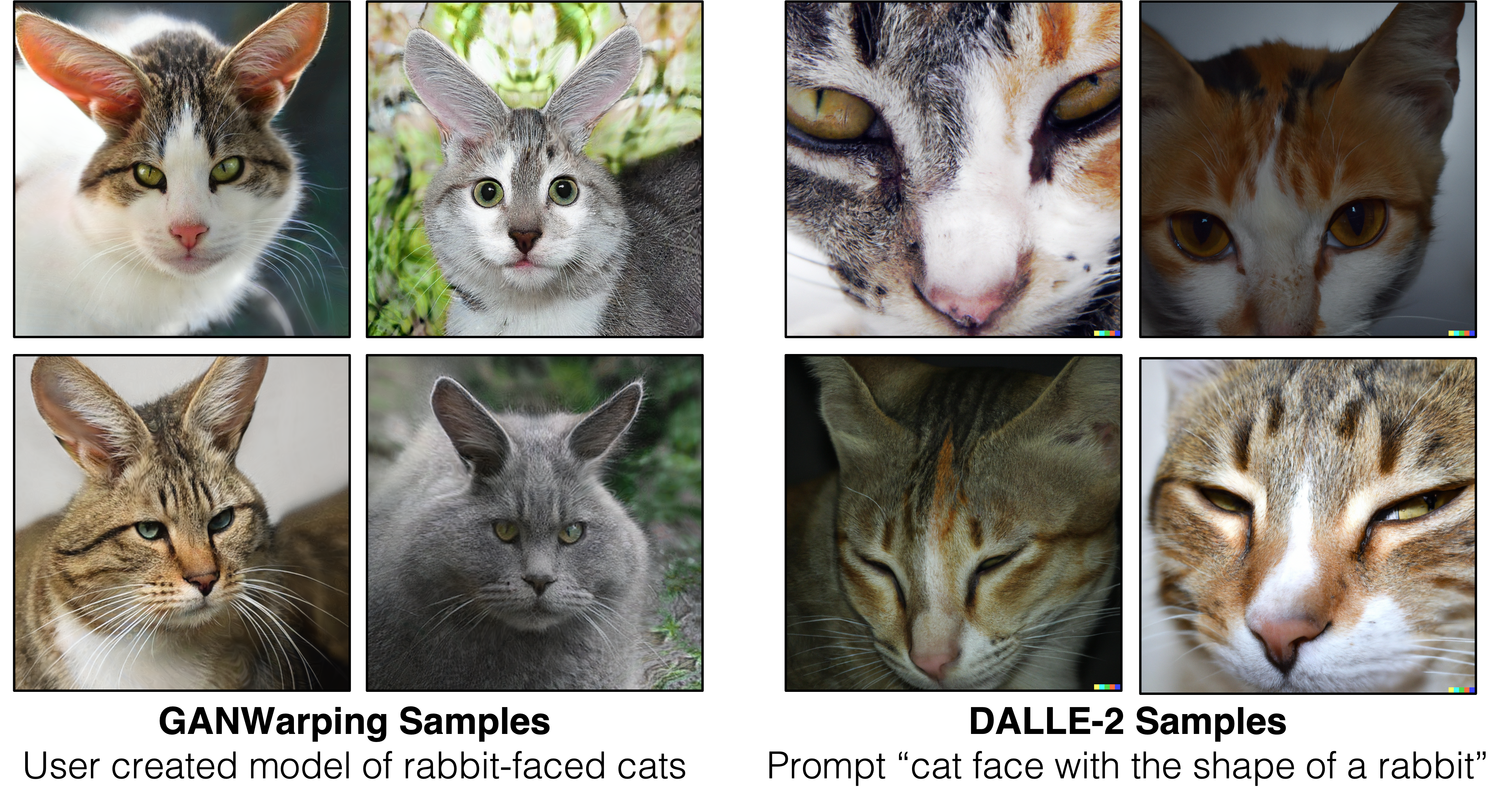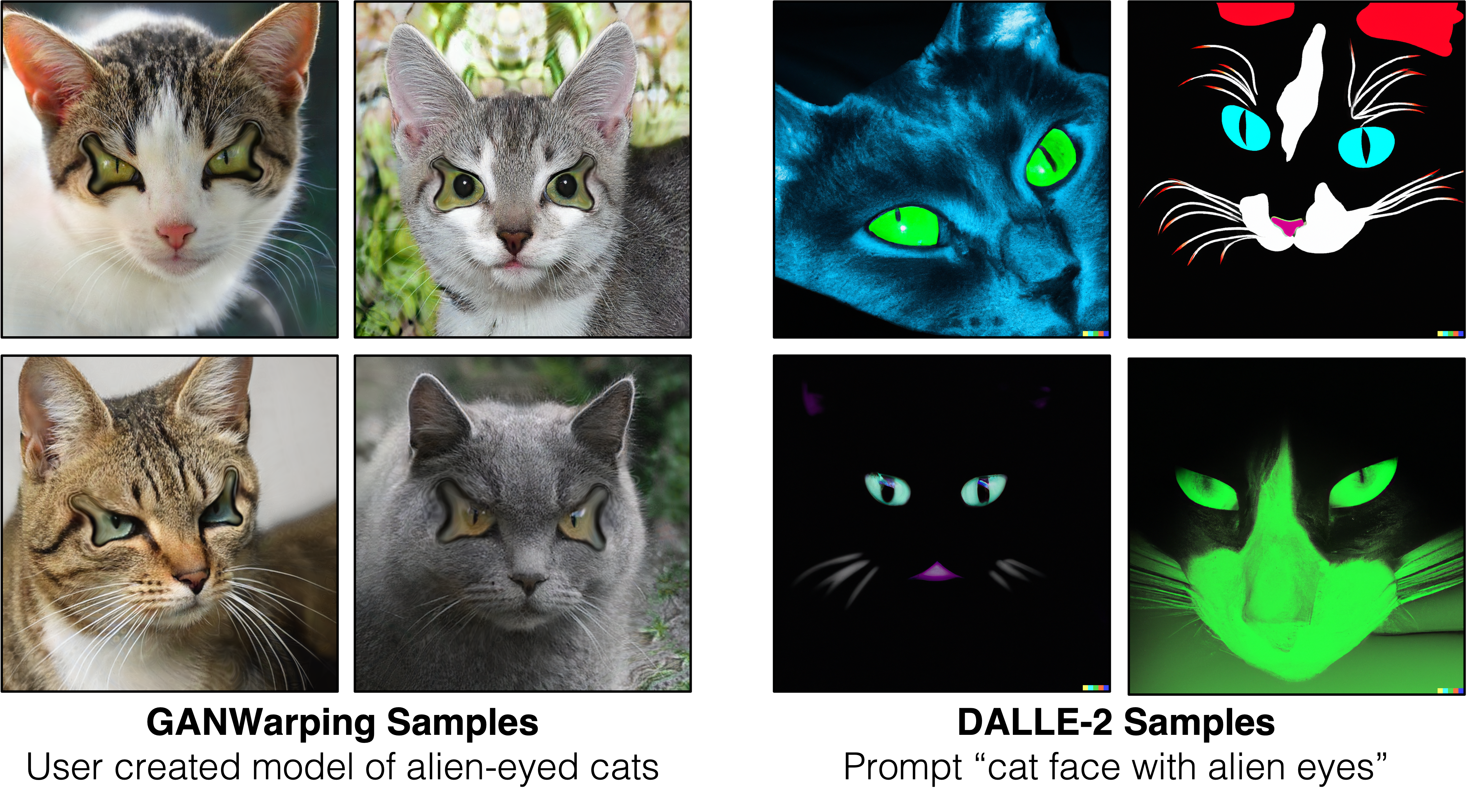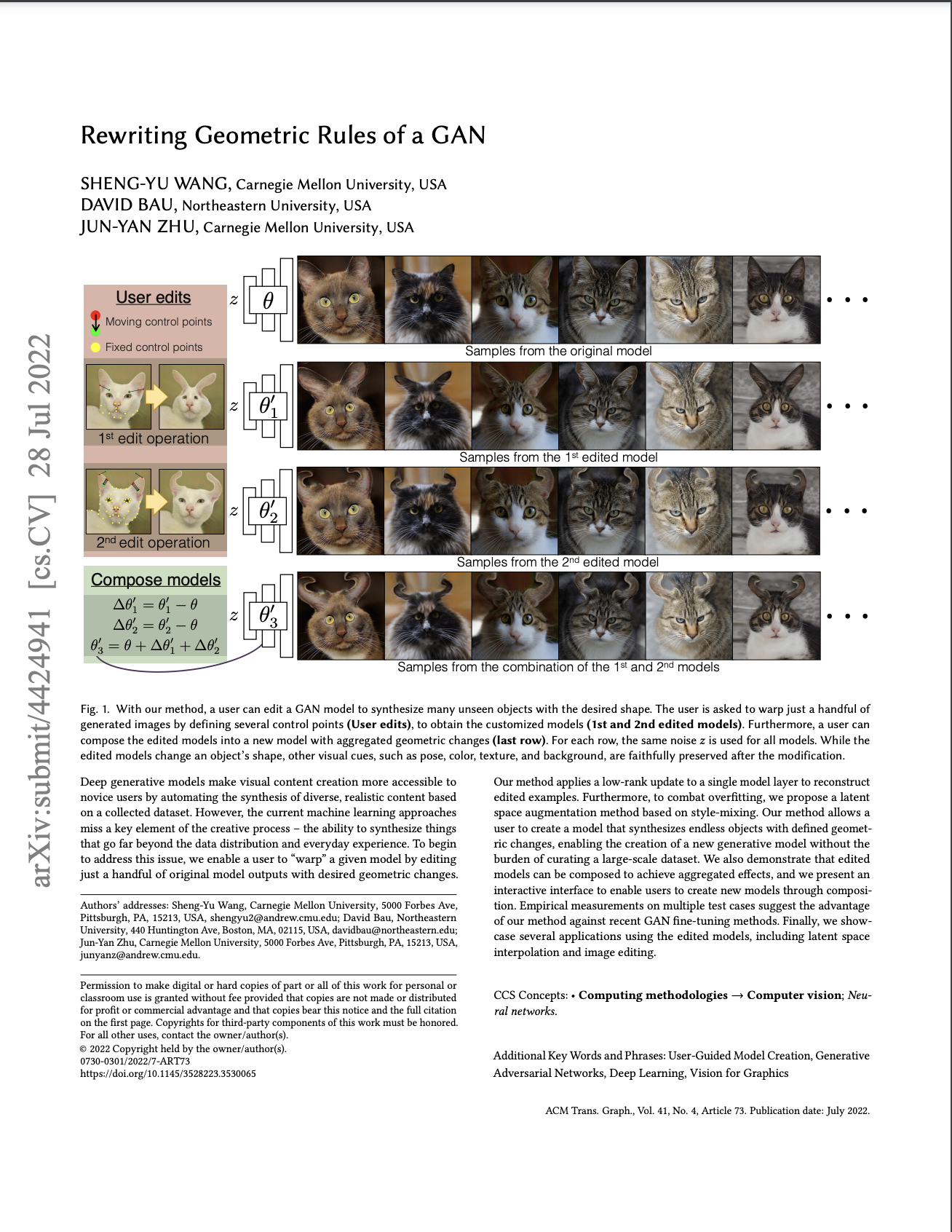
|
|
|
|
|
|
|
|
|
|
Code [GitHub] |
SIGGRAPH 2022 [Paper] |
Slides [pptx] |
|
|


 |
Sheng-Yu Wang, David Bau, Jun-Yan Zhu. Rewriting Geometric Rules of a GAN. In SIGGRAPH, 2022. (Paper) |
|
|
Related worksModel editing:
Low-rank model updates:
Few-shot finetuning:
|
Acknowledgements |